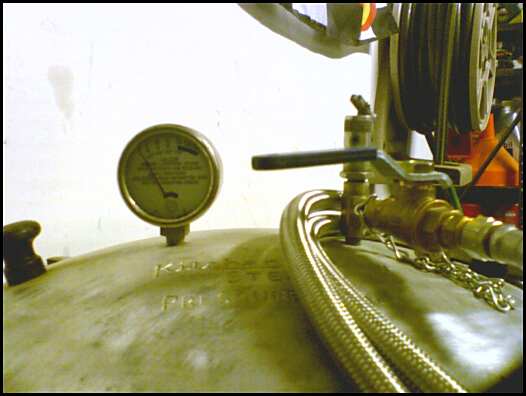Sumta
Member
Urk! Please move this to techniques.
For those of you using steam to heat and maintain your mash:
In Charlie Scandrett's article on steam heating he did two things that I have not seen in any one else's posting on the subject. He superheated the steam coming from his pressure cooker and he added a second "larger" outlet from the cooker that went down into a bucket filled with water.
Superheating the steam makes sense to me. It makes steam that is about as full of heat as it can get. The question that concerns me is, "Can the superheated steam be super enough to back up into the pressure cooker and blow the lid? Why the heck not?"
Maybe that is addressed in adding the second outlet. In his article, he implied that its a vacuum break, preventing the cooling cooker from drawing the wort into the steam pipe. But honestly, I am not sure what it does.
Can anyone address this (preferably with the math/science behind it)? Is anyone using that setup?
jw
For those of you using steam to heat and maintain your mash:
In Charlie Scandrett's article on steam heating he did two things that I have not seen in any one else's posting on the subject. He superheated the steam coming from his pressure cooker and he added a second "larger" outlet from the cooker that went down into a bucket filled with water.
Superheating the steam makes sense to me. It makes steam that is about as full of heat as it can get. The question that concerns me is, "Can the superheated steam be super enough to back up into the pressure cooker and blow the lid? Why the heck not?"
Maybe that is addressed in adding the second outlet. In his article, he implied that its a vacuum break, preventing the cooling cooker from drawing the wort into the steam pipe. But honestly, I am not sure what it does.
Can anyone address this (preferably with the math/science behind it)? Is anyone using that setup?
jw


 . It does no damage to the equipment so I am not a bit concerned over it. Maybe if I were hard piped all the way from the mash tun manifold to the pressure cooker, it may rattle a bit but I have a flexible hose from my cooker to my mash. You can see it in some of the pics in my gallery. I'm sure some will think that is insane but I have used that hose for a long time with no problems. It is a braided hot water heater hose. I'm sure if I superheated my steam, this hose would not be able to handle the temperatures but it works just fine in my app.
. It does no damage to the equipment so I am not a bit concerned over it. Maybe if I were hard piped all the way from the mash tun manifold to the pressure cooker, it may rattle a bit but I have a flexible hose from my cooker to my mash. You can see it in some of the pics in my gallery. I'm sure some will think that is insane but I have used that hose for a long time with no problems. It is a braided hot water heater hose. I'm sure if I superheated my steam, this hose would not be able to handle the temperatures but it works just fine in my app.

